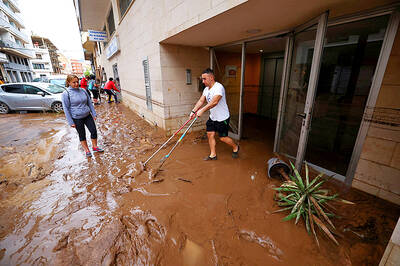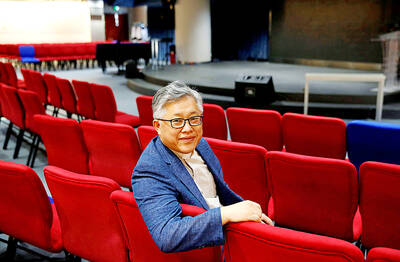“Keep moving ... keep moving,” Lieutenant Wilson Santos bellowed at 50 sweaty soldiers as they hacked their way up a hillside through a sea of coca plants in Bolivia’s La Asunta region.
The army’s eradication campaign began earlier this month after La Paz decided to trim back the country’s overproduction of coca leaf, which can be processed into illegal cocaine or used for chewing or drinking in a centuries-old local tradition.
The eradication program — the government calls it “rationalization” — is supported by the US, the chief destination of cocaine trafficking, but frowned upon by the locals, who watch their livelihood being cut down amid uncertainty over their future.
The military hopes to slash 5,000 to 8,000 hectares of coca plantations per year until the world’s third-biggest producer reaches the legally sanctioned level of 12,000 hectares.
That’s how much coca leaf the country needs for traditional use as a mild stimulant either chewed or swallowed as an infusion, estimates suggest.
Harvesting coca leaf for the illegal drugs market, however, is a lucrative, mushrooming industry. More than 30,000 hectares are currently devoted to coca cultivation, the government said.
In Sud Yungas Province, at the foothills of the Andes 200km east of La Paz, much of the coca cultivation is deemed superfluous.
The authorities said it was not a forced eradication campaign, but one reached in agreement with coca growers who are offered substitute crops and government investment in local infrastructure, including roads and sanitation.
The agreement is fragile, however, and coca’s bad reputation does not sit well with La Asunta’s estimated 15,000 farmers, who mostly grow coca leaf for its yield of three crops a year, far more abundant than citrus fruit or coffee.
Locals chafe when people say their coca is snorted up in foreign markets. They say their plant has been used for thousands of years for chewing, drinking and in the religious ceremonies of the indigenous Aymara.
“This is a traditional coca-producing area. What we grow goes to the legal markets of La Paz. It’s under control,” local farmers leader Emilio Mayta said.
Coca grown in Yungas is reputedly the sweetest and best suited for chewing. Farmers say the leaf for cocaine is best reaped in the central region of Chapare, birthplace of Bolivian President Evo Morales, who was a coca growers’ union leader before taking office.
They said Sud Yungas has seen precious little of the promised government investment: There are no bridges over the rivers, the roads are mined with potholes and the villages are powered by electric generators.
“The government is all confused,” farmer Severino Mamani said. “We need development right here, right now if they want us to switch from coca to growing some other crop.”
“Because if the government simply continues slashing away, what are we going to live on?” he asked.

STEPPING UP: Diminished US polar science presence mean opportunities for the UK and other countries, although China or Russia might also fill that gap, a researcher said The UK’s flagship polar research vessel is to head to Antarctica next week to help advance dozens of climate change-linked science projects, as Western nations spearhead studies there while the US withdraws. The RRS Sir David Attenborough, a state-of-the-art ship named after the renowned British naturalist, would aid research on everything from “hunting underwater tsunamis” to tracking glacier melt and whale populations. Operated by the British Antarctic Survey (BAS), the country’s polar research institute, the 15,000-tonne icebreaker — boasting a helipad, and various laboratories and gadgetry — is pivotal to the UK’s efforts to assess climate change’s impact there. “The saying goes

Floods on Sunday trapped people in vehicles and homes in Spain as torrential rain drenched the northeastern Catalonia region, a day after downpours unleashed travel chaos on the Mediterranean island of Ibiza. Local media shared videos of roaring torrents of brown water tearing through streets and submerging vehicles. National weather agency AEMET decreed the highest red alert in the province of Tarragona, warning of 180mm of rain in 12 hours in the Ebro River delta. Catalan fire service spokesman Oriol Corbella told reporters people had been caught by surprise, with people trapped “inside vehicles, in buildings, on ground floors.” Santa Barbara Mayor Josep Lluis

Police in China detained dozens of pastors of one of its largest underground churches over the weekend, a church spokesperson and relatives said, in the biggest crackdown on Christians since 2018. The detentions, which come amid renewed China-US tensions after Beijing dramatically expanded rare earth export controls last week, drew condemnation from US Secretary of State Marco Rubio, who on Sunday called for the immediate release of the pastors. Pastor Jin Mingri (金明日), founder of Zion Church, an unofficial “house church” not sanctioned by the Chinese government, was detained at his home in the southern city of Beihai on Friday evening, said

TICKING CLOCK: A path to a budget agreement was still possible, the president’s office said, as a debate on reversing an increase of the pension age carries on French President Emmanuel Macron yesterday was racing to find a new prime minister within a two-day deadline after the resignation of outgoing French Prime Minister Sebastien Lecornu tipped the country deeper into political crisis. The presidency late on Wednesday said that Macron would name a new prime minister within 48 hours, indicating that the appointment would come by this evening at the latest. Lecornu told French television in an interview that he expected a new prime minister to be named — rather than early legislative elections or Macron’s resignation — to resolve the crisis. The developments were the latest twists in three tumultuous